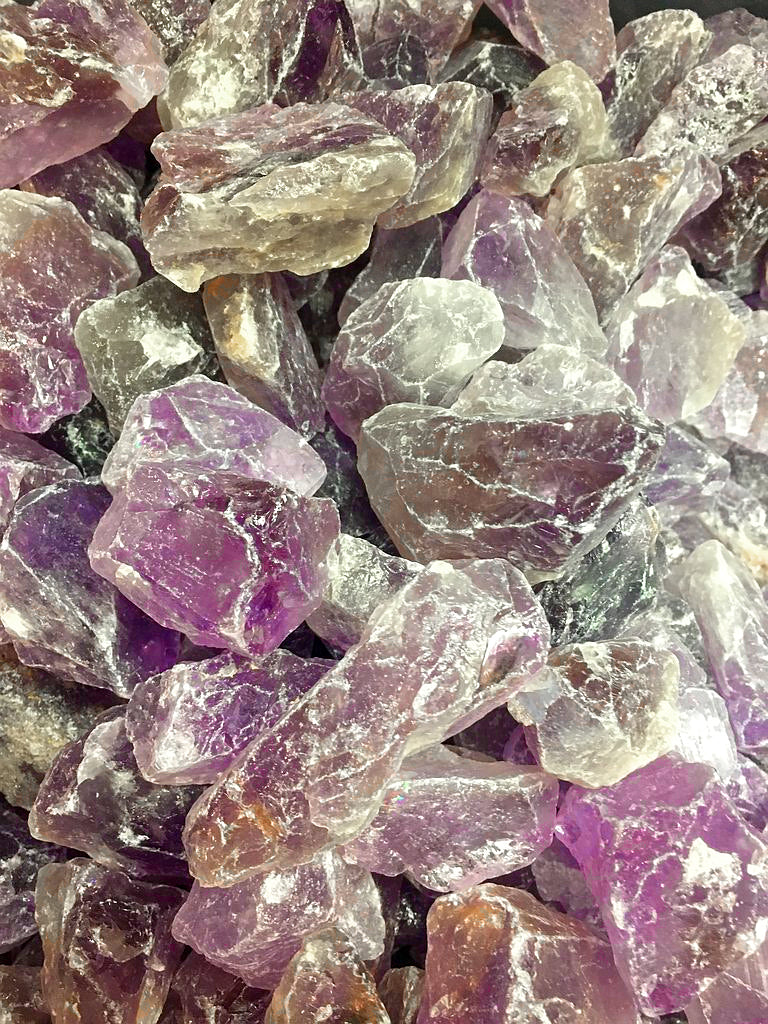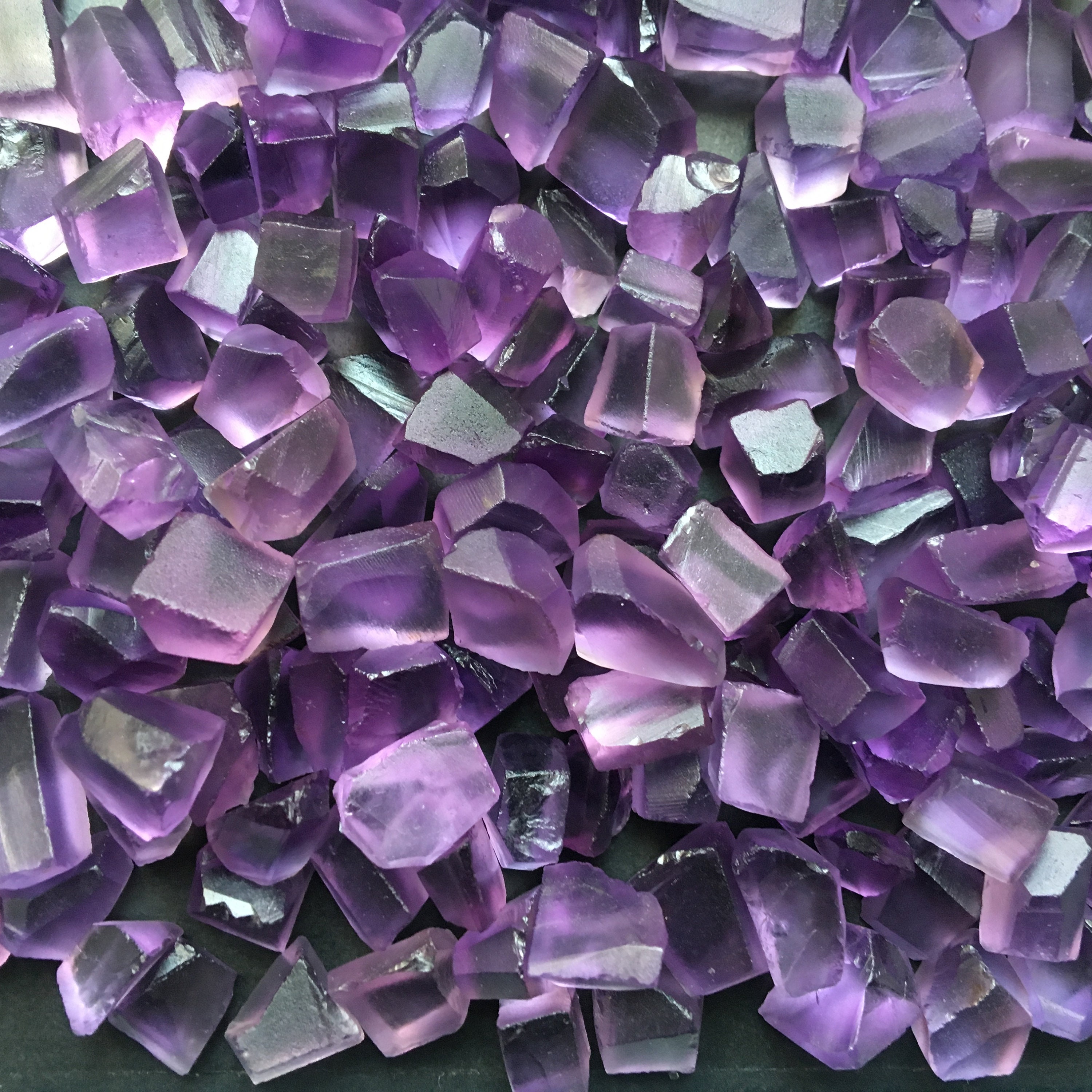

These physical properties make amethyst a valuable gemstone for use in jewelry and other decorative objects.

Luster: Amethyst has a vitreous (glassy) luster, which gives it a bright and shiny appearance.

Transparency: Amethyst can be transparent to translucent, depending on the quality of the specimen.Cleavage: Amethyst has no distinct cleavage, meaning that it does not break along specific planes or directions.This means it is resistant to scratching and can withstand moderate wear and tear. Hardness: Amethyst has a Mohs hardness of 7, making it relatively hard and durable.Crystal Structure: Amethyst has a hexagonal crystal structure, meaning that its crystals have six sides.Color: Amethyst is typically purple to violet in color, although it can also range from pale lilac to deep purple.Here are some of the key physical properties of amethyst: The presence of amethyst in these rocks can provide valuable information about the geological history and processes that have shaped our planet.Īmethyst is a variety of quartz, and as such, shares many of the physical properties of this mineral. Nevertheless, amethyst can be found in a variety of geological settings, including volcanic rocks, granite, and hydrothermal veins. The exact conditions required for the formation of amethyst are still not fully understood, and researchers continue to study the mineral to gain a better understanding of its origins. The resulting crystals can grow over time, forming amethyst geodes and other structures. This process is known as “secondary deposition” and can occur when water carrying dissolved minerals seeps into the ground and reacts with existing minerals. As the fluids cool and solidify, they form quartz crystals, which can develop the purple coloration characteristic of amethyst if the right conditions are present.Īnother theory is that amethyst can form in the cavities and fractures of rocks as a result of precipitation from groundwater. These fluids can contain dissolved silica, which is the main component of quartz, as well as trace amounts of iron and other impurities. One of the most widely accepted theories is that amethyst forms in hydrothermal veins, which are fractures in the Earth’s crust that are filled with hot mineral-rich fluids. The exact conditions required for the formation of amethyst are still the subject of research, but several theories have been proposed. The purple coloration of amethyst is due to the presence of iron and other trace elements within the quartz crystal lattice. The exact composition of amethyst can vary depending on the specific deposit and the conditions under which it formed, but the basic chemical formula remains the same.Īmethyst forms in the Earth’s crust from the mineral quartz, which is one of the most common minerals on Earth. The purple color of amethyst is due to the presence of trace amounts of iron and manganese in the crystal lattice. This means that amethyst is composed of silicon and oxygen, with each silicon atom bonded to four oxygen atoms in a tetrahedral arrangement. In this article, we will explore the formation, physical properties, mining and processing, and geological significance of amethyst.Īmethyst is a variety of the mineral quartz and has the same chemical formula as quartz, which is SiO2. From a geological perspective, amethyst is fascinating because of the way it forms and its presence in various geological settings. Amethyst is the birthstone for the month of February and is also associated with properties such as calmness, stability, and mental clarity. The name “amethyst” comes from the Greek word “amethystos,” which means “not drunken,” as it was believed to have the power to prevent intoxication. It is a popular gemstone used in jewelry and has been prized for its beauty for centuries. Amethyst is a mineral that belongs to the quartz family, known for its purple to violet hue.


 0 kommentar(er)
0 kommentar(er)
